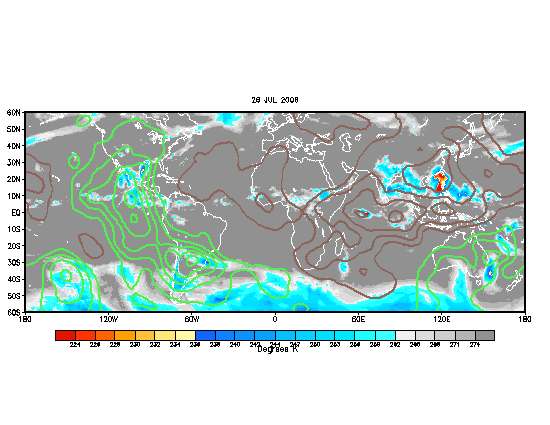The 2007 tornado season was a fantastic one for chasers who went early. Synoptically evident event after event. Although the mesoscale often went awry (you can't predict that stuff from way out), most chasers from March-early May were treated with many good events. But then came the "Death Ridge". There were still events in late May, and June, but they were not as numerous, and often came down to the mesoscale. Of course though, my general rule of thumb is that more things will go wrong with the mesoscale, in a given length of time, than will go right. Although two events pop out in my mind, when nearly everything went right (March 28 and April 21), there were numerous other events which everything went wrong. Nevertheless, the synoptic events are listed below:
Feb. 23-24 (Early season tornadoes in TX, Lower Miss. R. Valley tornadoes)
Feb. 28 - Mar. 1 (Early season EF4 in KS, SE Enterprise, AL Tornado outbreak)
March 28 (High Plains tornado outbreak)
April 13-14 (Mainly bust, few tornadoes in TX and Atl Coastal Plain)
April 21 (TX Panhandle tornado outbreak)
April 23-24 (Plains tornadoes, mainly bust, but Eagle Pass, TX tornado included)
May 4-5 (Greensburg tornadoes, tornado outbreak)
June 6-7 (Mainly bust, few tornadoes in WI)
Chasers also caught tornadoes on March 21, May 22-23, and then June 23 in Canada. But otherwise, that was it. However, March 28, April 21, April 23-24, and May 4-5 were epic days for chasers, with many bagging multiple tornadoes, some wedges (exception of last one with Apr 23-24). For many it was a nice reprieve of the relatively boring years of 2005-2006, although certainly not legendary like 2004, 1991, 1993, 1995, 1999 et al (that I would like to correct from my previous post).
For myself, it was a new beginning. This year was the first which I had even attempted long-range severe wx forecasts. They were quite experimental, and I really did not know what to expect. And I did fairly well. Not bragging, but for my first year at attempting this, I felt like I had grabbed onto something that was right.
My high points:
-Seeing the Feb. 23 event several weeks in advance, though I was a little early with the timing
-Seeing that April would be an active month (that was true b/c the pattern was active, even though due to mesoscale factors, the tornado count was around average)
-Correctly forecasting the early June event and the subsequent arrival of the Death Ridge
My low points:
-Seeing the March 28 outbreak from several weeks out, then rescinding my prediction, only to have it happen
-Thinking early April was going to be extremely active (turns out there was a break from April 3-12)
-Not updating the blog as much as I should've
I guess my overall grade for this year's predictions would be a B+. Long-range, that is. Could've been better w/ more updates, and maybe it was luck that helped me, so an A will never be a grade until I've done this for at least 2 or 3 years.
As it is July already, my focus will now shift toward the tropics. With the tropics, I have yet to do a significant amount of research, but I will try my best.
(P.S. Since this only includes Feb thru Jun, my horrible January forecasts do not count. This is not to vindicate myself; rather, there was not enough tornadic activity in January to justify it as part of the 2007 'tornado season'.)

